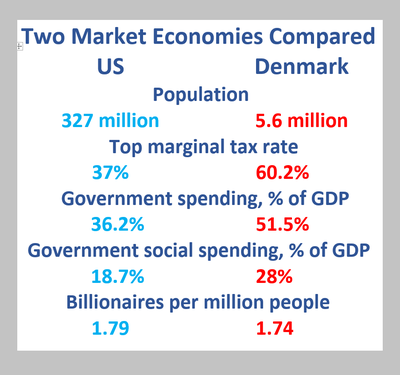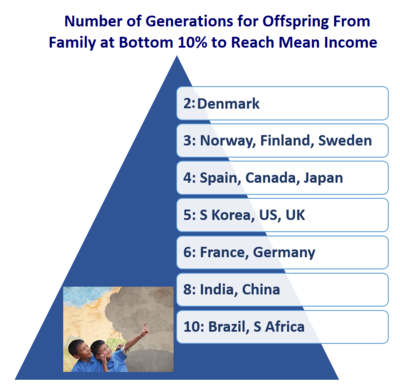Denmark the New “American Dream”? PIIE
Denmark the New “American Dream”? PIIE
Read the analysis from Peterson Institute for International Economics that compares the US and Denmark.
Jacob Funk Kirkegaard, senior fellow, has been associated with the Institute since 2002.

Taxes and spending: The United States and Denmark are each market economies and democracies; citizens of the latter tend to support higher tax rates for investment in social services (Source: Peterson Institute for International Economics )

Fast upward mobility: Children in families with the lowest 10 percent of income confront challenges in some societies to reach the middle class due to varying levels of education, health and other social supports or disadvantages; the estimates are simulation-based and intended to be illustrative (Source: Data, Organisation for Economic Co-operation and Development; photo, UNICEF)